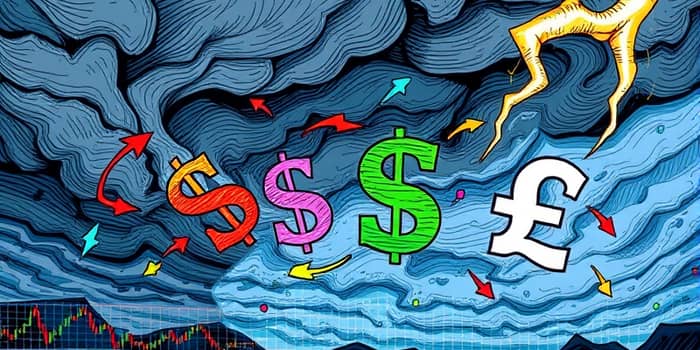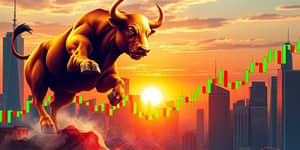
In today’s interconnected economy, the foreign exchange market stands as a testament to the transformative power of global finance. As traders and investors look to seize profit opportunities, they must also navigate the unpredictable currents that characterize 2025’s trading landscape.
From policy shifts to geopolitical shocks, currency values react at a moment’s notice. Mastering this terrain demands both a clear understanding of market mechanics and a resilient mindset prepared for rapid change.
Volatility in the FX market has surged to levels rarely seen in recent history. With the VIX index hovering around 27.5—well above its long-term norm—investors confront elevated uncertainty across global markets. This spike stems from fresh tariff regimes, emerging deglobalization trends, and persistent interest rate fluctuations.
Emerging market currencies, in particular, have displayed dramatic swings as political and economic instability collide. Meanwhile, core assets like US Treasuries offer a momentary haven, underscoring the need for balanced portfolio construction.
For the modern trader, understanding these patterns is the first step toward leveraging volatility rather than fearing it.
Several forces shape the daily ebb and flow of currency pairs:
For example, the Trump administration’s tariff measures and political unpredictability have injected notable turbulence into USD and EUR crossings. Conversely, Germany’s massive €500 billion infrastructure bill triggered a swift euro rally, reflecting the profound impact of macro policy shifts.
Tracking year-to-date changes offers insight into prevailing trends:
Notably, the euro’s strength underscores how stimulus and policy cohesion can revive a currency. Meanwhile, the dollar’s mixed performance highlights ongoing debates over its safe-haven role amid political change.
The FX market is celebrated for being the world’s largest and most liquid, operating around the clock from Monday morning in Asia through Friday evening in New York. Yet, on-the-ground realities can differ dramatically depending on the pair and time zone.
Liquidity tends to concentrate in major pairs like EUR/USD, making spreads narrower during peak hours. In contrast, emerging-market currencies often feature highly liquid yet highly unpredictable behavior, requiring careful risk controls.
Each instrument carries distinct advantages and risks. Spot FX offers direct exposure, while futures and options provide standardized risk parameters. CFDs enable traders to amplify returns—but also losses—through leverage.
Keeping a close eye on scheduled data releases is crucial for anticipating market moves. Key indicators include:
Unexpected surprises in any of these releases can trigger sharp swings and trading opportunities. Seasoned traders often build strategies around the economic calendar to position themselves ahead of volatile events.
Thriving in a turbulent FX landscape requires more than luck—it demands methodical planning and robust safeguards. Consider these strategic pillars:
Implementing these principles can transform market noise into actionable signals. By blending technical analysis with macro fundamentals, traders gain a holistic view, enabling them to anticipate and react to sudden shifts.
Navigating the forex market in 2025 demands both technical acuity and emotional resilience. With volatility levels elevated and policy landscapes shifting rapidly, traders must cultivate a balanced approach that incorporates discipline and risk management techniques.
Armed with a deep understanding of key drivers, robust strategies, and vigilant monitoring of economic indicators, participants can seize the moment and turn unpredictability into opportunity. In an ever-evolving financial ecosystem, those who adapt will find that the forex market’s inherent volatility is not a threat—but a catalyst for growth and innovation.
References













